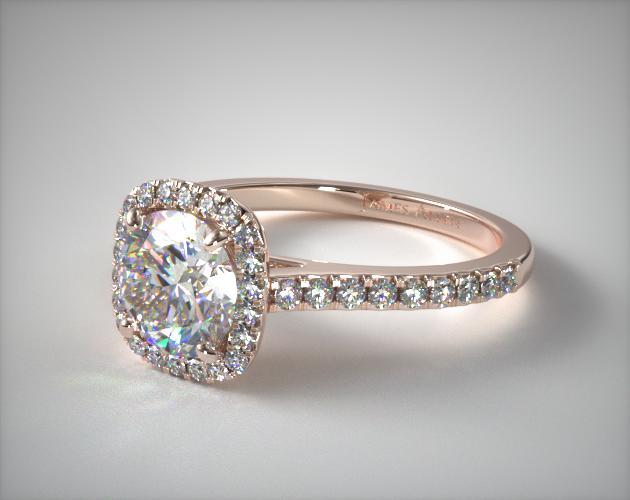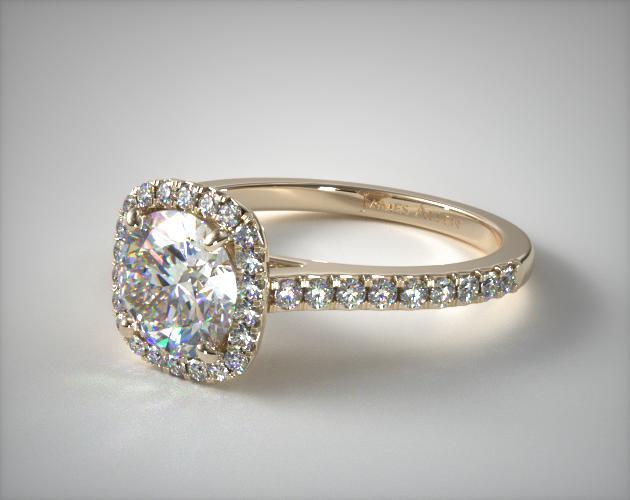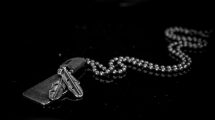As Wedding Know How editors, we write about things that we love and we think you'll like too. We have affiliate partnerships and sponsorship and may generate some revenue from these at no cost to you.
Engagement and wedding rings, as well as other types of jewelry, can be crafted out of a large variety of metals and materials but gold has consistently been the most popular type of metal over the centuries.
Gold comes in multiple different variations – standard yellow gold, white gold, rose gold, and even alloys such as black gold, green gold, blue gold and others.
If you’re new to the subject you’re likely wondering how gold can come in all these colors when gold is always yellow. That’s a valid question – natural gold is yellow. However, even the yellow gold you see in jewelry is not pure gold – it’s an alloy of gold and several different metals.

This is done because gold is a very soft and fragile metal so it’s not suitable enough for jewelry on its own and needs to be mixed with other metals strengthen it for use in jewelry. And it’s exactly the presence of those other metals that can affect the color of the alloy in the end as well.
So, with the basics out of the way, let’s take a look at the three most popular gold alloys for engagement rings and wedding bands – white gold, yellow gold, and rose gold.
What goes in them, what are the main differences between them aside from color, and which type is best for your jewelry needs?
Yellow Gold

Stunning yellow gold engagement ring. See it here.
The most traditional and well-known option for wedding rings is yellow gold. It’s typically a mix between natural yellow gold, zinc, silver, and copper, commonly in either a 75% gold to 25% copper/zinc ratio or in a 58% to 42%.
75% gold purity results in 18 karats yellow gold while 58% purity is known as 14 karats. Pure gold is 24 karats.
You can usually find yellow jewelry gold in other karat ratios as well but 18k and 14k are the most popular choices as they are a great middle-ground between durability, price, and the classic yellow gold color.
Style-wise, yellow gold is usually an excellent fit on most skin tones and clothing choices, but it works especially well on olive and darker skin tones.
Because of its classical status, yellow gold is often considered a vintage, traditional, and non-contemporary choice, which is ideal for those leaning towards a traditional look.
White Gold

Classic white gold half-eternity wedding band. See it here.
Unlike yellow gold, white gold alloys include metals such as palladium, nickel, silver, or manganese. These metals give it a whiter, platinum-like color, as well as extra durability.
Even in more balanced mixtures (14 karats or less), the yellow hues from the gold are usually still noticeable which is why white gold rings are also covered in a rhodium plating which gives them a more reflective, whiter color.
This rhodium plating also adds an additional protective effect on the metal but needs to be replated every year or so as it can wear off. The procedure is not overly expensive and certain jewelers can even offer it for free as part of the initial purchase but it’s still something that you need to bother doing.
White gold is a much more recent mixture than yellow and rose gold – it became popular in the 20th century as an affordable but still valuable alternative to platinum. White gold is considered the more modern choice compared to yellow and rose gold as most contemporary styles work well with white and black colors and contrasts.
White gold fits most skin tones and clothing styles but it works best with fair and rosy skin tones.
Rose Gold

Rose gold moissanite engagement ring by AusGems Co. See it here.
Rose gold owes its romantic pinkish or reddish color to the presence of copper in its alloy. Like yellow and white gold, rose gold is also most commonly used in 14 or 18 karats.
14k pieces have a stronger reddish color and higher durability, while 18k pieces sport a lighter rose color with yellow hues and are generally softer.
Copper may sound like a less valuable inclusion to a gold alloy and it’s certainly cheaper than things such as palladium or silver. This doesn’t affect the value of rose gold, as with all gold alloys, it’s the gold content that typically gives the piece its value. Additionally, copper is very sturdy, and it makes rose gold significantly stronger and sturdier than yellow and white gold pieces of similar karats.
Ironically, this strong gold alloy is also the most romantic option of the three as the soft and emotional rose color is considered a delicate, feminine touch, making it perfect for engagement and wedding rings.
Additionally, rose gold fits all skin tones very well, whether they are warm or cool. Yellow gold is still usually preferred for darker skin tones but rose gold looks great on them as well. Rose gold might be delicate looking, but it’s gorgeous for men’s wedding rings too and is a unisex metal that looks great on both men and women.
Comparing Rose Gold vs. Yellow Gold vs. White Gold
White, yellow or rose gold? See these rings here
Now that we’ve covered the main aspects of these three gold alloys, let’s see how they stack up against each other. We’ll cover most of the main points of contention below so that you can decide which gold alloy is the best for your particular situation.
Durability
With the karats being equal, the large presence of copper in rose gold makes it the most durable option of the three. White gold is a close second because of the palladium and nickel in it, plus the rhodium plating it often has.
Yellow gold is the softest of the three, but it too is durable enough for use in jewelry pieces. Still, whichever of the three alloys you prefer, if you’re worried that your gold engagement or wedding ring won’t be durable enough you can simply get one with lower karats of gold.
Color and style
The main differences for most people between these three gold types are their colors and the styles which they fit. Yellow and rose gold pieces are typically viewed as the more traditional, vintage, and romantic choices while white gold is a cooler and more modern variant.
All three colors work well on most skin tones with yellow gold suiting darker and warmer skin tones better, white gold suiting cooler and paler skin tones, and rose gold sitting in the middle and fitting most people.
With those minor differences in mind, it’s all a matter of personal preferences.
Price and Value
The price and value of all three types of gold are largely determined by the amount of natural gold in them – the more gold there is, the higher the gold content, and the more expensive the overall price. The additional metals in the alloys can sometimes also affect the price.
Palladium and silver are more expensive than copper and zinc so you can expect white gold to be slightly more expensive than yellow and rose gold pieces of similar karat value. The rhodium plating also factors in the overall price, as well as the “free” rhodium coatings which jewelers usually offer with the purchase. Even with all those additional factors, however, the price difference isn’t that significant most of the time and the amount of pure gold remains the main factor to consider.
Ease of maintenance
Different alloys require different care:
- White gold needs to have its rhodium plating recoated every couple of years, especially if you live a fairly active lifestyle. This isn’t so much expensive as it’s annoying.
- Rose gold has no plating on it but it can lose its rosy tone after a while and may require polishing once every several years. The procedure easily returns a shiny rose color to the piece but also reduces its overall size so it shouldn’t be done often.
- Yellow gold also has no additional plating on its surface, and it remains pretty much consistently yellow over the years. Wear and tear can affect it too, however, so expect to have to polish it every once on a while as well.
Aside from these main differences, all three types of gold need to be carefully stored and protected from harm, as well as to be frequently cleaned with mild soapy water only.
Allergies
There are certain hypoallergenic jewelry metals out there, but most gold alloys don’t fall in that category. Depending on the exact materials in each alloy, the alloy can be either bio-compatible or not.
For example, some people have nickel allergies which makes a lot of white gold alloys unsuitable for them. There are nickel-free white gold alloys but you must make sure that you know exactly what you’re buying.
Another common example is copper allergies. All rose gold alloys contain copper as do some yellow gold alloys. If you have a copper allergy it’s best to avoid both of these metals.
Metal Color and Gemstones

Pink sapphire in white gold setting. Check price here.

Peridot in yellow gold setting with halo. Check price here.
Another important factor when choosing the metal for your engagement or wedding ring is what setting and stone it’s going to have. Different metals work better with different stones so let’s compare these three gold types with that in mind.
White diamonds work very well with all three types of gold – yellow, rose, and white gold alike – because of its neutral color.
Most colored diamonds work better with yellow and rose gold than they do with white gold but of course take this on a case by case basis. Often white gold provides too much contrast to the color of the metal.
Gold Alloys and Settings
With yellow and rose gold being the more “traditional” options, they tend to work best with vintage and classic styles of settings. White gold, on the other hand, usually looks best with more modern and clean settings. This is largely a matter of personal preferences, however, so don’t feel restrained by these stereotypes.
Higher or Lower Karats
All three types of gold can work equally well with most of the common karat ranges. The general rule is that if you want something sturdier and less expensive you should go for fewer karats.
Color-wise, because of its rhodium plating, the color of white gold is largely unaffected by the amount of pure gold in the alloy.
Yellow and rose gold can have different colors depending on their karatage as more karats means brighter and richer yellow hues while lower karats mean more reddish tones in rose gold or paler yellow in yellow gold.
Which Should I Choose?
If you’re unsure which metal to choose, consider the type of jewelry you normally wear. Do you gravitate towards the warm hues of rose and yellow gold or the crisp, modern look of white gold?
Check out With Clarity’s engagement ring settings.
One way to make sure is by trying out different rings and seeing which you feel the most comfortable with. We recommend trying out With Clarity’s Home Preview Service which allows you to design up to two engagement rings and have replicas mailed to you completely free of charge. You can then try out the replica rings for a few days to see how they look against your finger.
Why not have rings with two metal colors sent for you to try, and see which of the two you prefer? Note that you won’t be getting a real gold ring but only a replica that looks and feels like the real thing. If you don’t like the look, simply return the rings with no commitment to buy. Note that this service is only for engagement rings and for residents of the US.













